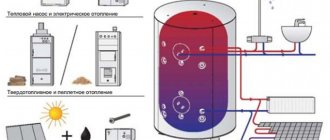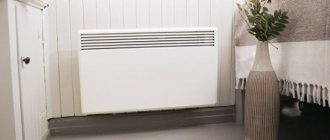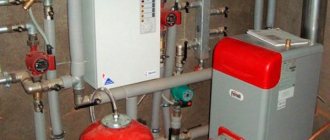The home may have a minimum of furniture and electrical appliances, but there must be a heat source. Since ancient times, home has been associated with good health, positive mood, and a cozy psychological atmosphere. Heat in an apartment or country house can be provided using modern methods using gas or electricity. But the issue of heat production using alternative fuels remains relevant in many cases.
Heating system options
The most common way to obtain thermal energy is through the combustion of fuel.
In multi-storey buildings, heating is most often central, but there is a massive trend towards switching to an autonomous type of heating. It is several times cheaper and better quality. Nowadays there are compact heaters on sale that can be installed in small apartment kitchens. Practice shows their efficiency and ease of use.
In private houses and cottages, heating can be different:
- Steam from the central boiler room. Nowadays this is rare, mainly in houses that were once departmental, and then became private property. Therefore, central heating is more relevant to multi-apartment high-rise buildings.
- Autonomous on natural gas or electricity. Basically, they try to supply natural gas to houses and dachas wherever there is access to it. Connecting to gas pipeline networks is not difficult if you take into account all the requirements of the gas supply organization and purchase equipment that complies with the rules for installing a gas heating system. Autonomous heating with electricity is quite expensive and is justified only in young regions and in places where it is impossible to connect to gas.
- Stove or fireplace for various types of fuel. If the stove is made by a competent stove maker, then such a heating system solves the problem of how to heat a house without electricity and gas. The stove creates a special microclimate in the house, purifies the air, and living heat has a beneficial effect on the body.
Water circuits are often connected to stoves or fireplaces when it is necessary to organize an effective heating system for a dacha without gas or electricity.
Description of how you can make heating cheaply and quickly with your own hands
Anyone who has encountered unauthorized construction knows about the problems that often arise during construction. One of these problems is the high cost of building materials. There are also problems with time.
Usually all construction work is always delayed. And I really want to be in time for the cold weather, to find myself warm and in a cozy home on a soft sofa. It’s frosty and the wind is howling outside, but at home it’s nice and warm.
But in order to have these benefits, you need to take care in advance of the most important source of heat, heating.
Where to begin?
Plan
The first thing you need to do is make a plan. It is necessary to calculate the area , thermal power for heating the room, draw up a diagram where all the radiators, taps, in general, all the heating parts will be located.
Make an estimate, which will indicate what material and in what quantity you will need, sizes, diameters, and also select reasonable prices for the material.
You shouldn’t forget about the tools; you definitely need to make a selection of tools and include them in the estimate.
Materials for heating wiring
Where should you start heating your home? What might be needed, what materials?
Basic heating elements:
- boiler, you need to select the power for it;
- any radiators can be suitable, the heat transfer is calculated (calculation is 1 section per 3 square meters, at a coolant heating temperature of 70 degrees;
- pipes, the most popular, cheap and in demand, are metal-plastic and polypropylene. They are inexpensive and durable, easy to install, and even welding is not required for such connections and installations;
- taps and valves.
So, all the components are assembled, now you can begin installing the heating system. Before installation begins, it is necessary to determine the circulation method for the heating system.
There are two ways:
- natural or gravitational;
- forced.
Depending on the method, additional heating parts may be required, such as a pump that pumps water so that the water does not stagnate.
The natural circulation method of the heating system does not require additional connections, it does not even require connection to energy resources.
This is a fairly simple method and completely autonomous.
However, this method also has its drawbacks, such as this method can only heat small areas and there are some additional parameters when installing this type of circulation.
The forced circulation method includes the installation of an electric pump in its system to continuously supply water during circulation. This method is considered the most convenient and universal. With this method of water supply, large areas can be heated.
However, it also has its drawbacks , it will cost you much more than a natural one, you will need to additionally purchase the pump itself and an emergency power source for the pump.
Also, cheap pipes will not be suitable here; more durable pipes will be needed that can operate under pressure drops and pressure increases.
You will definitely need higher quality safety valves, which means more expensive ones.
Heating systems
To make your own heating you will need another diagram. The diagram according to which you will connect the elements of your heating system. Your system may be:
- two-pipe;
- single-pipe
When a two-pipe system operates, water from the main passes into each section of each radiator, and then goes back into the main .
When a single-pipe system operates, water passes: from the main line to the radiator and without returning back, it goes further into the main line through the following radiators. This means that the first radiator will receive more heat than the next one and the last radiator will receive the least heat.
After you have made your choice, drawn up a plan and estimate, purchased all the components of the heating system, selected the tools you need so that you can carry out the installation yourself, with your own hands, you can begin constructing and assembling the system.
Heating system installation
The further operation of the heating system will depend on correct installation, so you must follow a strict procedure for assembling the system.
Let's proceed with installation in order:
- we install the radiator, install it on the walls, secure it well so that the radiator does not dangle, if the radiator is installed under a window, then it must be installed strictly in the center;
- install fittings;
- we lay pipes for water supply, drill or punch holes for pipes between wall openings and partitions;
- the return line is laid;
- install the pump.
Important! Install valves and taps where they are provided for according to your plan . Install them during system installation. You will need taps and valves so that you can drain water, reduce pressure, and clean pipes.
If you want to learn how to properly make heating on your own, with your own hands, then you can watch video instructions. The video shows everything clearly.
Which fuel is more profitable?
Heating boilers operate on various types of fuel. And the fuel that is most common is not always beneficial for the consumer.
For comparison, you can consider several options:
- Heating devices powered by electricity. This is an alternative heating of a private house without gas, but it is more expensive.
- Gas boilers. Mains gas is much cheaper than electricity. The balloon one will cost several times more.
- Diesel fuel. Organizing diesel heating is not difficult, but it will not be cheap. In addition, the strong smell near heating equipment is a big disadvantage. This fuel is used when it is necessary to organize heating of a private house without gas and electricity.
- Coal is 3-4 times cheaper than diesel fuel. Used for stoves, fireplaces and solid fuel boilers.
- Peat briquettes are more expensive than coal, but in many cases they are more convenient to use.
- Firewood is the most common type of solid fuel and the cheapest, but it is not very convenient to use, as it burns out quickly. Typically, firewood is prepared for heating in a dacha without gas. Pellets are wood pellets that are used mainly for heating equipment with automatic fuel supply. Lately, pellets have been chosen more and more often when it is necessary to solve the problem of how to heat a house without gas and electricity.
Each type of fuel has its own advantages and disadvantages. For heating a house or cottage, more affordable fuels are often chosen.
Comparison
Operating costs
Here's how our participants line up when assessing their cost-effectiveness:
- The undisputed leader is solar heat. Collectors convert it into heating coolant completely free of charge. Electricity is consumed only by circulation pumps;
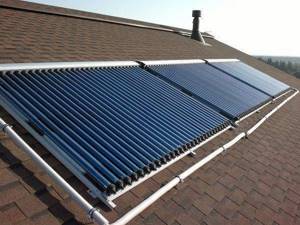
Pitched roof with solar collectors.
- In second place is a solid fuel boiler that runs on wood. Yes, yes, I am aware that we are in the 21st century. These are Russian realities: in the absence of main gas and with short daylight hours, firewood is still more economical than all other heat sources and provides a cost per kilowatt-hour of 0.9 - 1.1 rubles;
- Third place is shared by pellets and coal. Depending on local energy prices, a kilowatt-hour of heat obtained by burning them will cost 1.4-1.6 rubles;
- Liquefied gas from a gas tank provides a kilowatt-hour cost of 2.3 rubles;
- The use of cylinders increases it to 2.8 - 3 rubles;
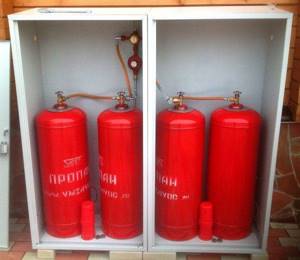
The gas cylinder station will allow you not to change the cylinder every day.
- Liquid fuel boilers running on diesel fuel produce heat with an average cost of about 3.2 rubles/kWh;
- The obvious outsiders are electric boilers. The price of a kilowatt-hour of heat obtained by heating water with a heating element or any other direct heating device is equal to the cost of a kilowatt-hour of electricity and, at current rates, is approximately 4 rubles.
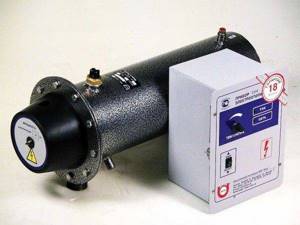
Induction electric boiler. Its undoubted advantage is reliability. But in terms of efficiency, it is no different from a device with heating elements.
Installation costs
How much will it cost to install heating in a country house or country house?
In order not to cause confusion due to the variation in the parameters of the heating system, I will compare the average cost of heat sources of the same rated power - 15 kW.
Gas boiler - from 25 thousand rubles;
- Pellet boiler - from 110,000;
- Electric boiler - from 7000;
- Solid fuel boiler - 20,000;
- Liquid fuel (diesel or exhaust) - from 30,000;
- Solar collectors with a total power of 45 kW (three times the power reserve compensates for downtime in the dark) - from 700,000 rubles.

Downtime at night has to be compensated for by the number of collectors.
Obviously, only wood and coal provide a reasonable balance between the cost of a kilowatt-hour of heat and the heating equipment itself. A good alternative to them - used oil - cannot participate on equal terms in our competition due to the inaccessibility of this energy carrier.
Free solar heat turns out to be prohibitively expensive at the installation stage: the cost of a thermal energy accumulator will be added to the exorbitant costs of the collectors themselves.

Diagram of a heating system with solar collectors.
Ease of use
Laziness, as you know, is the engine of progress. You want to heat your home not only cheaply, but also with minimal expenditure of time and effort.
What are the different heating options with autonomy?
- Electric boilers are in the lead. They work indefinitely and do not require any maintenance at all. The coolant temperature can be adjusted automatically using a remote electronic thermostat. Electrical equipment allows you to program daily and weekly cycles (for example, reduce the temperature while you are away);
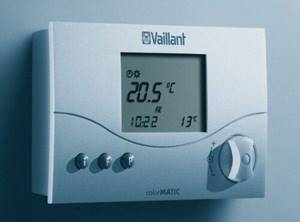
Remote thermostat for an electric boiler.
- A gas boiler with a gas tank provides autonomy for several months, or even an entire season. It differs unfavorably from an electric boiler in the need to remove combustion products, so the location of the device is tied to the ventilation, chimney or external walls of a private house;
- The autonomy of a liquid fuel device is limited only by the volume of the fuel tank;
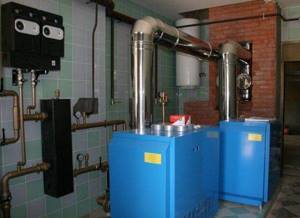
Diesel boiler room.
- The use of several parallel-connected cylinders reduces the autonomy of heating equipment by up to a week;
- A pellet boiler can work approximately the same amount of time on one load;
- A solid fuel boiler needs to be topped up every few hours and the ash pan needs to be periodically cleaned. This period can be increased by limiting the thermal power with a covered air damper, but in this case, incomplete combustion of the fuel will reduce the efficiency of the device and, accordingly, increase the owner’s heating costs.
What's the result? But in the end, comrades, we have to choose between the limited autonomy of a pellet boiler with its rather high cost, the continuous kindling of a solid fuel appliance and the sky-high cost of thermal energy from an electric boiler.
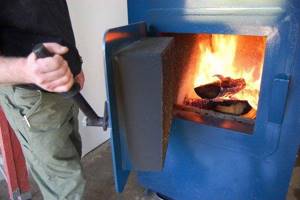
The main problem with solid fuel heating is frequent lighting.
How to do without connecting to gas pipelines and electricity
It is not always possible to use gas or electricity for heating. And then other options come to the rescue
There are several alternative ways to heat your home without gas or electricity. The most common are stoves and fireplaces burning wood, coal and pellets. Usually they build a brick structure or buy a factory unit. It is also necessary to build a chimney. You can cook food at the same time if a hob is provided. Stoves and fireplaces are an excellent solution when the question is how to heat a house without gas and electricity.

Methods for extracting autonomous electricity are becoming increasingly popular:
- From solar collectors. These units convert solar energy into thermal and electrical energy. The equipment is usually installed on the roofs of buildings. It costs a lot, but once you spend it once, you won’t be left without electricity and heat while our earth is warmed up by the heavenly body.
- Using wind energy. Equipment for generating electricity from wind can be purchased ready-made. But home craftsmen also make it themselves. The entire device includes a turntable, battery and generator.
Method 2 - tubular electric heaters
They transfer heat from a tubular electric heater to a liquid-based coolant. Typically, water and oil are used as a coolant, and sometimes antifreeze. The design principle of heaters is the same as that of electric kettles, which is why they are also called heaters and oil radiators. In fact, it is a boiler placed in a vessel with water. The efficiency of such devices is quite high, and heat loss for heating is minimal.
pros
- The undoubted advantages of tubular heaters include their safety, operational reliability and versatility of use.
- Can be used in both gaseous and liquid media.
- Not explosive, and not afraid of vibrations and shocks.
- Tubular heaters are available in a variety of design solutions, which allows you to economically heat a private home with electricity without disturbing the aesthetics of the interior.
Minuses
Heating heating elements have a high cost due to the expensive metals that are used in production. Since scale forms on the pipes, it is necessary to take care of the quality of the water.
A tubular radiator is a thin-walled metal tube with a spiral inside, so if you do not need particularly high temperatures, then you need to take a heater with carbon steel tubes. If the device must produce a consistently high temperature or operate in an aggressive environment, then you need to take a device made of stainless steel.
The photo shows a tubular electric heater made by yourself
Heating without pipes and boilers, without gas and electricity
Now it is difficult to imagine heating without pipes and boilers. The layout of modern housing is so complex that it is practically impossible to centrally install one stove to heat the entire building. And once upon a time, energy-saving heating without pipes, boilers and radiators was common. Houses were built in such a way that one stove could be used.
Without connecting a water circuit, the following types of heating cope with their task:
- brick or metal stoves for heating one room or adjacent rooms;
- fireplaces solve the problem of heating a house without gas and electricity;
- electric heaters of various types (reflex, oil, heat guns);
- air conditioners (used rarely, before frost sets in to avoid breakdowns).
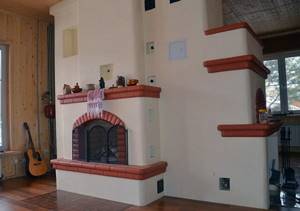
On a note. If you design a home according to the principle of the old Russian “five-wall”, you can do without a water circuit with radiators. It is enough to place a single stove in the center, between adjacent rooms. In general, new home heating technologies allow you to choose the optimal heating option for each specific case.
Recommendations for system maintenance
Provided that it is properly arranged, especially if a modern electric boiler is installed, the autonomous heating system will not require virtually any attention. The owner will only be required to add coolant to the system 1-2 times every six months.
If desired, the mentioned event can be eliminated by combining the supply and expansion tanks into a single system. However, this can only be done if the autonomous heating system is properly installed.

Gas boiler maintenance
In addition, the system must be checked annually, before the start of the heating season and after its completion. Regular checks allow you to timely identify various types of malfunctions and errors made during the installation of the main elements of the heating system.
Follow the recommendations received, and the autonomous heating of your home will serve you well for many years.
Heat pump for a private home: keep warm without burning fuel
Scientists have invented a new way to generate heat without burning fuel. These are heat pumps, the operating principle of which is similar to a refrigeration unit.
Just like in a refrigerator, the heat pump design contains tubes containing freon. The equipment includes throttle, compressor and heat exchange chambers.
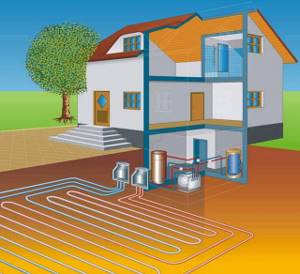
All stages of the pump’s operation are called the “Carnot cycle” after its inventor:
- liquid freon descends through tubes deep underground or into a reservoir, turns into gas and rushes back up (the temperature underground remains up to 8 degrees above zero even in winter, and freon turns into gas already at 3 degrees above zero);
- in the compressor chamber it is compressed, and according to the law of physics, it heats up to 80 degrees;
- after passing through the heat exchanger, freon enters the throttle chamber, cools down and turns back into liquid;
- then the cycle repeats.
Heat pumps are distinguished by the source of freon heating. The source can be surface or underground reservoirs, earth or air. These data are indicated in the technical specifications of the equipment.
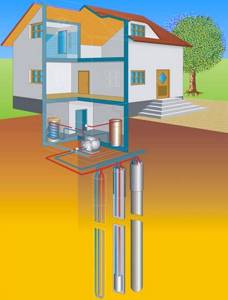
On a note. The fuel pump requires electricity to operate. But in much smaller quantities than for direct heating of the building.
In cases where there are no power lines near the buildings where the heat pump is installed, diesel fuel is used.
Using a heat pump is safe for humans, since no open fire is used, so there are no combustion products. The refrigerant used is environmentally friendly and has no harmful fumes.
Heat pumps allow you to create energy-saving heating without pipes and boilers.
Energy-saving heat supply for a personal home: principles, technologies
Heating systems very often occupy the first positions in the cost estimates for maintaining personal homes. First of all, this can be attributed to electrical equipment, although units that operate on other energy sources also require significant operating costs. Moreover, the heating service sector clearly shows by its own example the dependence of the operating efficiency of the system on the invested resources. Also, the transition to fairly inexpensive heat sources is determined by other negative factors. For example, gas systems require very high safety measures, limiting customers' choices. One way or another, the desire for savings does not leave the minds of technologists in this area, thanks to which energy-saving heat supply in a wide variety of conceptual options very often appears in the proposals of engineering companies. Some solutions are just a marketing gimmick, while others are completely worthwhile in actual use.
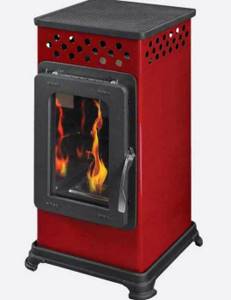
Principles of energy efficient heat supply
The idea of energy-efficient heating systems is based on the principles of saving fuel, costs for maintenance work and the maintenance of technical services. To ensure that the system meets these requirements, designers use a wide range of tools and technological solutions. For example, boilers have double combustion chambers, ordinary radiator installations receive materials with very high heat transfer, and distribution patterns of load-bearing elements are calculated from the very beginning taking into account the specifics of the operating location. Energy-saving heat supply without pipes and boilers, which is based on panel heat transfer, is also becoming popular. According to the point of view of a number of experts, this is the most promising direction. This idea is based on the principle of rational accumulation of generated energy. In fact, using this means reducing not only the consumed energy resource, but also the structural simplicity of the base. In other words, a set of miniature radiator stoves is installed in the house, which save free space, but at the same time generate the same amount of heat as systems that provide pipe services.
Principles of heating ecosystems
Energy-saving technologies in most industries are closely associated with eco-principles. security. On the one hand, the main principle of operation of this equipment is considered to be minimizing the consumption of natural energy resources from the exhaustible class, and on the second, complete harmlessness for the clients themselves. The last factor is very important against the backdrop of the desire of many manufacturers to attract owners of private homes with systems with very high energy efficiency, which is ensured precisely through the use of toxically hazardous materials. As for optimizing the consumption of energy resources, this idea is implemented by energy-saving heat supply that consumes biofuel raw materials. Environmentally friendly systems of this type involve the modernization of convection boilers, due to which they generate heat by burning waste wood processing, vegetation residues, dried manure, etc. Now it is worth considering in more detail certain energy-saving technologies in heating systems.
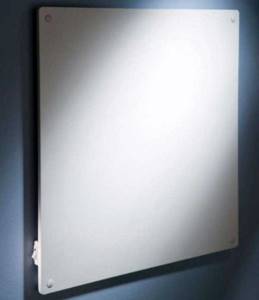
Quartz heaters
This is the most effective type of panel heating, which meets the key principles of energy efficiency and eco-friendliness. security. The heating device is a stove made using quartz. The specialized solution is mixed with quartz sand granules and is also reinforced with a chromium-nickel heating element. Next, the mass is assembled in a press into a clear shape and, under the influence of temperature, acquires hardness and strength. In essence, the result is electric heating, the energy-saving property of which is expressed in the ability of quartz sand to accumulate current distributed through a chromium-nickel conductor. When the system is activated, the panel quickly reaches the desired temperature, and after switching off, it maintains it for a long time. In other words, to support a given mode, you do not need to leave the device turned on regularly. The system will provide heat transfer for a couple of hours in passive mode.
Thermal panels
Another type of panel energy-efficient heating systems, which has its own positive qualities due to a special operating principle. Infrared radiation is distinguished by its ability to heat not so much air as objects. The device operates on the principle of heat transfer to objects, which, for their part, dissipate the flow in the room. The result is equal heating. According to the calculations of professionals, the temperature difference from the installation location of the emitter to the extreme point in the room is no more than one degree, and such devices are energy saving. Heat supply for a house with large rooms can be built according to this principle. In this case, not a point climate, but a specifically balanced climate is organized throughout the entire space. In terms of other properties, IR heaters preserve the advantages of the quartz panel mentioned above.

Energy efficient heating devices
Radiator heating systems are also of interest to companies involved in energy saving technologies. Unlike conventional radiators, such models appear in separate vacuum sections filled with a lithium bromide liquid base. At a temperature of 35 °C, steam formation occurs in this filler. As a result, the upper parts of the vacuum sections are heated, which, in turn, distributes heat throughout the room. During operation, energy-saving heating batteries are distinguished by lower water consumption - basically, only 500 ml are required for one unit. This is much less when compared with the level of use of conventional radiator installations.
Energy efficient boilers
Heat generating installations and furnace installations are also subject to improvements in operational and structural qualities. Gas-generating energy-saving heating boilers, which have the principle of continuous heating, are closer to conventional units. It is achieved through a specialized design with a double firebox. During operation, in other words, secondary combustion of waste products occurs. From the very beginning, solid fuel material is burned in a key chamber, and then gaseous substances go through the next stage of finishing with the release of heat.
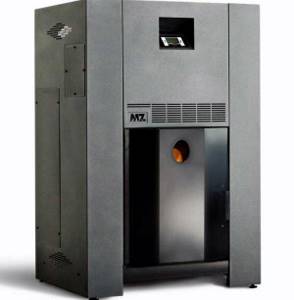
Another direction in the development of the concept of energy-efficient boilers is based on the principles of burning biological fuel. These are combined electric heating boilers, the energy-saving qualities of which are determined by the guarantee of operation on pellets, specialized fuel pellets and briquettes.
Solar energy saving batteries
Batteries powered by the energy of photovoltaic batteries make it possible to provide virtually free energy supply to the engineering sector of residential services. The heating system in this case acts as a consumer of accumulated energy, which is converted into electricity using specialized generators. The same electric boilers or heating devices with convector heaters act as direct heating equipment. However, if in the process of generating heat energy-saving heating batteries do not incur costs, then their technical maintenance is expensive. And this is not to mention primary investments in the same photovoltaic batteries and transformative backup power plants. It is this nuance that is currently holding back the wide spread of this technology, but soon solar batteries will be able to fully justify their energy-saving function.
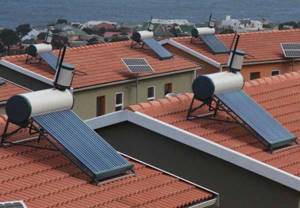
District heating optimization tools
Practice shows that the cost indicators for energy resources of heating systems are to a large extent determined by the quality of the project. The layout of heating pipes, installation points of heat-emitting panels, boiler room performance - all this affects the use of electricity or fuel materials. Therefore, even at the step of choosing a heating method, it would be a good idea to at least correlate the power of the installation with the requirements for the volume of heat transfer. In addition, energy-saving heat supply based on conventional systems can be achieved through the integration of automatic control systems. They will be able to help achieve rational consumption without the participation of the client by managing operating modes.
Specifics of installation of energy efficient equipment
Systems with very low energy consumption are distinguished not only by their operating principles, but also very often by invisible installation aspects. In particular, models of energy-efficient heating devices in certain versions are attached to the ceiling surface, which allows them to perform their function with greater heat output. In contrast, today's underfloor heating systems are integrated directly into the screed and dissipate warm flows from the bottom to the part above. It has its own specifics and energy-saving heat supply in the form of quartz panels. They are placed on the surface of the walls, but with a very small area coverage.

Maintenance of energy efficient systems
Maintenance and maintenance of energy-efficient equipment is often more expensive than for classic units. This is associated precisely with the use of original power supplies. For example, biofuel boilers require the organization of conditions for storing the same pressed fuel pellets and briquettes. Such material is susceptible to dampness and requires very high fire safety measures. Also, solar energy-saving heating for a personal home requires technical support from converters, and the panels themselves must be constantly monitored for more effective heat accumulation.
How to choose the ideal energy-saving solution?
The volume of heat transfer is considered the main indicator that must be taken into account when selecting a heating supply. In basic versions, small installations, like the same heating devices, are quite capable of servicing rooms with an area of 25-35 m2. However, for large living rooms, halls and rooms with high ceilings, powerful electric heating boilers are more likely to be needed. The energy saving properties of this equipment will not be very clear, but it is necessary to understand that using classic furnaces and boiler stations for such needs will cost much more.
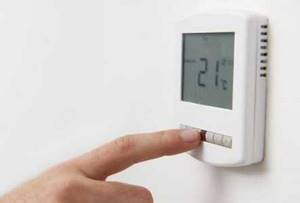
Conclusion
Technologies for optimizing the operating costs of heating units and related equipment in various fields are undergoing dramatic changes. Adjustments are made to both the design diagrams and practical support. But the starting points for the upgrades that energy-efficient heating systems are subject to are based on the operating principles of the equipment. The most significant deviations from classical systems are shown by technologies of environmentally friendly energy sources, although they are not yet in great demand among ordinary consumers. The same cannot be said about energy-efficient batteries and boilers, the specifics of which are expressed in the use of more affordable biological fuel.
How to avoid freezing without heating
There is a situation when creating a heating system is simply impossible or it is temporarily turned off, and you need to take care of insulating your home.
This will not solve the problem globally, but as a temporary measure it will help retain accumulated heat in the house:
- close all cracks in window and door openings;
- old windows are additionally covered with plastic film;
- insulate walls, floors and attic with heat-insulating materials;
- additionally cover interior openings with thick curtains.
You should know that any textile helps to retain heat; warm colors in the interior of the room have a psychological effect on a person. And, of course, hot tea and cozy fur slippers will help you warm up on cold evenings. All these measures should be taken even when the heating is in order, in order to use energy resources more economically.
Autonomous gasification: an expensive pleasure
Heating with liquefied gas is exactly the option that needs to be considered in special, exceptional cases: not only is the fuel itself quite expensive, but you will also need to install a massive gas tank, the cost of which depends on its volume; in general, gasification costs can be quite significant.
Heating with liquefied gas will require the installation of a gas holder
You can, of course, use small cylinders for heating, but this is inconvenient for a number of reasons, especially in large houses where people live constantly and not from time to time. Thus, autonomous gas systems cannot be called a popular way of organizing heating.
cheap heating without pipes, batteries and boilers
Warm all year round
The energy-saving system has become a breakthrough in heating technology. It was developed by engineers from the Chelyabinsk State Agricultural Engineering University. Gaining popularity and gaining more and more fame in the world market, PLEN is spreading widely throughout our homeland, although the scientists’ original goal was a simple desire to help the South Ural villages.
It all started in the late 1980s. Times were not easy, every resident of the country was looking for a way to earn money, and most importantly, save on everyday needs. Scientists have set out to make life more comfortable by developing film electric heaters. Production turned out to be inexpensive, the product was reliable, we got heating without pipes, radiators or boilers , no need for gas, coal or firewood. Compared to the colossal prices for all heating systems and methods, this was a real breakthrough!
Smart heat technologies
Film electric heaters (PLEN) are based on a special steel alloy, which is surrounded by a plastic sheet. When voltage is applied (from 120 to 380 Volts), the PLEN will evenly distribute heat over the entire surface. The efficiency of the device is 95-98%, so the operating cost is several times less than the cost of using conventional heaters.
Economical, efficient PLEN heaters quickly gained popularity in many areas of life: schools, agriculture, barns, garages, warehouses, balconies, preschool institutions and others.
KOUZI heating system: reviews and certificates
is a laureate of various exhibitions and forums, where she was awarded honorary diplomas and awards for the development and production of the KOUZI heating system. Energy-saving heaters KOUZI have certificates of conformity from the IC JSC State Rocket Center named after. Makeev”, a patent for the heater was received. Tests were also carried out at the Research Institute of Energy Efficient Technologies named after. Tupolev, Kazan. According to test results, heat transfer efficiency is 99.7-99.9%.
is ready to offer favorable terms of cooperation for construction and contracting organizations, as well as for dealers. Our specialists will answer all your questions by calling: (351) 216-11-99, 219-42-56,
More information on the website www.tehnologiitepla.ru
The most common types of heating
Today there are a large number of heating units that allow you to efficiently and efficiently heat any room.
The bulk of them work using energy from the combustion of fuel of any type, accumulating it into thermal energy. This contributes to high-quality filling of rooms with warm air.
If multi-storey buildings most often have central heating, then in private houses they increasingly use autonomous systems, which are beneficial both in terms of saving energy resources and in terms of financial expenses.
Most often used for heating:
- steam from the central system;
- gas or electric autonomous type;
- stove, which uses any type of fuel;
- fireplace.
You can independently vary the choice of heating, ranging from a large system with radiators and pipes to heating without pipes, radiators and boilers, consisting of just a single device.
Electric heating options
Electric convectors are considered the most popular device for this method of heating rooms. The main advantage is fast heating.

Besides:
- they have an easy installation system,
- they are comfortable to use.
The principle of operation is quite simple: the heat exchanger heats water and supplies it to the system using a pump.
A convector, at its core, is nothing more than a simple classic heater. It is worth paying attention - it provides heat only to the space within which it is located. Therefore, it is important to calculate the power of the device for each individual room.
Other characteristics of the device, in addition to power, are no less important. For example, the size of the case. It affects the speed of air flow entering the room. A height of about 50 cm is considered optimal.
Also, such convectors are completely safe, since their body does not heat up above the norm of 45-65 ° C. They can also be supplemented with other useful devices - such as an ionizer or antifreeze.
Fuel price and its characteristics
To heat a room, the design itself is not important, be it the largest pipeline or a minimized installation in which heating can be carried out without boilers, radiators and pipes; different types of fuel will change: gaseous, solid or liquid.
And it is worth noting that the choice of traditional fuel materials will not always be cost-effective and user-friendly.
- Electricity is the easiest to use, but this method is the most expensive.
- If we talk about gas consumption, it will cost several times less, but do not forget that gas supplied from the main line and liquefied gas in cylinders are fundamentally different. Methane is consumed in the common gas line, and the cylinders are filled with a mixture of propane and butane, which costs 5 times more.
- Using diesel fuel as fuel also cannot be called a cheap pleasure. In addition, this type of fuel smells unpleasant when burned, so it is not suitable for everyone, although according to its characteristics it is quite capable of replacing centrally supplied types of fuel.
- Stove heating using coal can heat a room without pipes, radiators or boilers, and it costs 3 times less than diesel fuel.
- Peat is also an ideal solution for stove heating, but compressed peat briquettes cost one and a half times more than coal and are not an economically viable choice.
- The cheapest fuel choice for a furnace system is wood. Although they are not expensive, you need to take into account that firewood burns out quite quickly (faster than coal) and it is not always possible to maintain a fire. Therefore, it is recommended to start igniting with wood and then add coal. This combined heating method is inexpensive and very effective.
- Another effective method is (which is ideal for boilers with automatic fuel loading and supply as needed) - pellets. These are compressed pellets consisting of wood waste.
Heating with gas convectors
The devices mentioned above are powered by gas supply. Their positive features:
- noiselessness,
- profitability.
Gas convectors are an ideal choice for installation in an apartment or country house. The device serves not only as the main one, but also as a backup temperature controller (the temperature can rise to 38 °C).
The system is powered by natural as well as liquefied hydrocarbon gas. The fuel change occurs due to the settings of the gas valve.
The device is usually mounted on a window sill. The kit includes pipe routing and temperature sensors. This device significantly minimizes heat loss, which is an important advantage.
A flaw in the system is manifested in the construction of holes in the walls to provide chimney channels.
Without using gas or electricity
Today, there are several alternative options for heating a room that do not require electricity or gas supply. Such heating from pipes without batteries will save money. Heating system options can be as follows:
- stoves and fireplaces. They heat the room using the energy of burning wood or coal. If you decide and choose this option, you will need to build a stove or purchase ready-made communications, which you only need to install correctly. At the same time, as a result, the family receives an environmentally friendly and economical method of heating, and if the stove is equipped with a frying surface, then it will cope with cooking food;
- an autonomous heating system from a personal source of electricity, which can be obtained in two ways:
- with the help of sunlight. Here you will have to spend money on special solar collectors that can convert solar energy into thermal energy and thus work as a heater. Naturally, you will have to invest in the purchase of equipment, but the expenses will be one-time, and the receipt of electricity will be constant;
- using the power and energy of the wind. To do this, you will have to build a special apparatus, which consists of a turntable, a generator and a battery. If you can’t assemble it yourself, you can purchase a ready-made structure that converts wind power into electricity.
All these methods work effectively without pipes, batteries and boilers; they are ideal for heating a one-story small country house in an area that is remote from the gas line.
Video 2. Heating without gas and wood. New!
Without pipes and boilers
An autonomous heating system is often equipped with a boiler to which pipe-radiator communications are connected, which make it possible to heat several rooms at once. However, properly selected heating without pipes and batteries, which operates from a single heat source, can work just as effectively. Most often this is:
- a stove made of brick or metal, which will be an ideal option for supplying heat to one room or two adjacent rooms;
- a fireplace, which was used in ancient times to heat castles;
- electric heater, reflex or oil-based;
- air conditioners, etc.
Remember that for a country house built according to the old “five-wall” principle, one stove, which is located in the middle of the house, is quite enough for high-quality heating. Even today, in such structures, heating is carried out without pipes, radiators and boilers.
Heating without fuel
Scientists have already invented a way to heat a room without using any fuel resources. This can be achieved using a device such as a heat pump.
It consists of pipes that are filled with freon, as well as throttle, compressor and heat exchange chambers. The device operates like a refrigerator and is based on simple physical laws.
The pipes are located deep underground or in a lake at a decent depth so that the ambient temperature does not rise above 8 0C even on the hottest day.
Already at 3 0C, freon boils and rises through them into the compressor, where it can be compressed and thus heats up to 80 0C.
The resulting heat is transferred to the heating system, penetrating through the heat exchanger. After this, the freon enters the throttle chamber, where its temperature drops and the pressure normalizes, converting the freon into a liquid state.
In this form, it is sent back to the highway underground, repeating the cycle in a circle.
Warmth without heating
Even without a heating system, without pipes, radiators and boilers, it is possible to warm up the room.
I personally regard this method with a grin, but in nature such an option exists, so we will describe it in the article (especially with regard to psychological heating).
There are several methods that are used both together and separately. These include:
- maximum insulation of your home. To preserve the particles of heat that come after cooking, breathing of residents, etc. It is enough to insulate the walls, add warm floor coverings to the interior, heavy curtains on the windows so that they block the access of cold air and do not allow heat to leave the room, etc. Even if the heating system works as it should, such nuances will allow you to save energy resources and not consume more heat than necessary;
- insulation of home wardrobe. Wear a warm sweater and slippers. While watching TV, cover yourself with a warm blanket or use a warm cape, a heating pad in bed and warm drinks (tea, milk);
- psychological heating. We change the design of the room, its color scheme to a warmer one (peach, yellow), add knitted decorative elements and wooden accessories. Use scented candles and photographs of warm countries in the interior. Thus, there is an impact in two directions: on the eyes and touch. This way you can deceive the body and make it feel warm.
In any case, you can find an opportunity and a suitable method to warm your home. Heating without pipes and boilers can be an effective solution to this problem even in severe frosts. Using the above methods, you will be able to warm your home even in the most unusual situations.
Heating via underfloor heating

It is worth noting that the heating scheme is very relevant today and is quite in demand. Although it became widely used relatively recently. Often you can do without radiators. Before installation, you need to decide whether it is justified. Since heating boilers are used quite often, it is rational to use the heating method by installing a heated floor.
This diagram is a pipe layout hidden under the floor covering. The room is heated by the heat carrier spreading through the pipes. They can be installed in several ways that affect the efficiency of the system under certain operating conditions.
Installation of a heated floor involves pipeline contours:
- snake configuration (zigzag arrangement);
- snail configuration (this installation involves a spiral arrangement of pipes).
Professionals in this matter consider the latest installation scheme to provide optimal, high-quality floor heating. When laying pipes, it is important to maintain a gap between them. It is usually calculated from power calculation considerations. It is recommended to reduce the gap as you approach the windows, and increase it when you reach the center.
Warming up buildings with a “warm floor” scheme requires a reasonable temperature distribution. The floor is heated identically over the entire surface area. The maximum value is 26°C, thereby providing a comfortable feeling to the legs. Under the ceiling, the temperature drops significantly, reaching approximately 22°C at human height.
Communications are located under the finished floor covering, and therefore designers do not have to rack their brains over interior design.
Heated floors are a winning option when it comes to saving energy consumption, as a result of which you can save your budget from financial waste. In most cases, if the heat loss at home is not great, you can do without installing radiators.
Liquid fuel boilers
You can heat your living space using equipment that runs on liquid fuel. Diesel is used as fuel. Such boilers are equipped with fan burners.
This device atomizes fuel and supplies it to the combustion chamber.
The device is equipped with a special regulator. It controls the appliances that are connected to the boiler. This could be a burner or a pump.
An important parameter of an oil-fuel boiler is power. This option requires preliminary calculation. This takes into account the number of window and door openings, the thickness of walls and ceilings.
A separate room is selected for installation of the liquid fuel boiler. It should have a hood and a place to store fuel.
To heat a house without gas or electricity, you need to equip the device with a special filter. This will prevent the injectors from clogging.
If the fuel needs to be replaced, the burner is reconfigured.
Diesel fuel equipment is characterized by noiselessness and performance.
Liquid fuel structures have high efficiency and can heat large rooms.
This system can be completely autonomous, which allows heating without gas or wood. No permits are required to install such a system. Such designs operate on various types of fuel and with any coolant.
When arranging equipment, it is worth considering the following features:
- Fuel costs increase compared to gas appliances.
- A container for storing fuel raw materials is installed in the room.
- A separate boiler room is being built. since the heating system is characterized by unpleasant odors.
- Electricity will be required, since when the power goes out, the backup generator must be started. In this case, you can heat your house without gas.

If we compare performance and characteristics, an oil-fuel boiler is on the same level as a gas boiler, differing only in the price of fuel and its types




